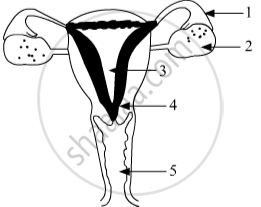Advertisements
Advertisements
Question
When a human female reaches a certain age then vaginal bleeding occurs for a few days after regular time intervals.
(a) What is this process known as (i) in scientific terms, and (ii) in everyday language?
(b) At what approximate age this process starts in human females? When is the human female said to have attained at this stage?
(c) After how much time is this process repeated? For how many days does this process usually last?
(d) What does the onset of this process in human females signify?
(e) At which particular event in the life of a human female does this process stop temporarily but start again?
(f) At which approximate age of human female does this process stop permanently?
Solution
Answer 97:
(a) The process is termed as (i) menstruation scientifically and (ii) periods in everyday language.
(b) The approximate age for a girl to undergo her first period is between 10 and 12 years. A human female usually attains puberty or sexual maturity at this stage.
(c) This process is repeated after every 28 days and usually lasts for 3 to 5 days.
(d) The onset of this process signifies sexual maturity in human females.
(e) During pregnancy, this process stops temporarily but starts again eventually.
(f) At the age of about 45–50, this process stops permanently.
APPEARS IN
RELATED QUESTIONS
Describe the function of placenta.
What are the male sex cells in humans called?
What is the life support system of a fetus?
Describe the process of fertilisation in humans and development of embryo briefly.
Describe the role of the following in human beings:
(i) Seminal vesicles
(ii) Prostate gland
Define the following:
Implantation
Identify the given diagram.
Name the parts 1 to 5. 
Choose the Odd One Out:
Choose the Odd One Out:
The following is the illustration of the sequence of ovarian events (a-i) in a human female.

Write the difference between C and H.
